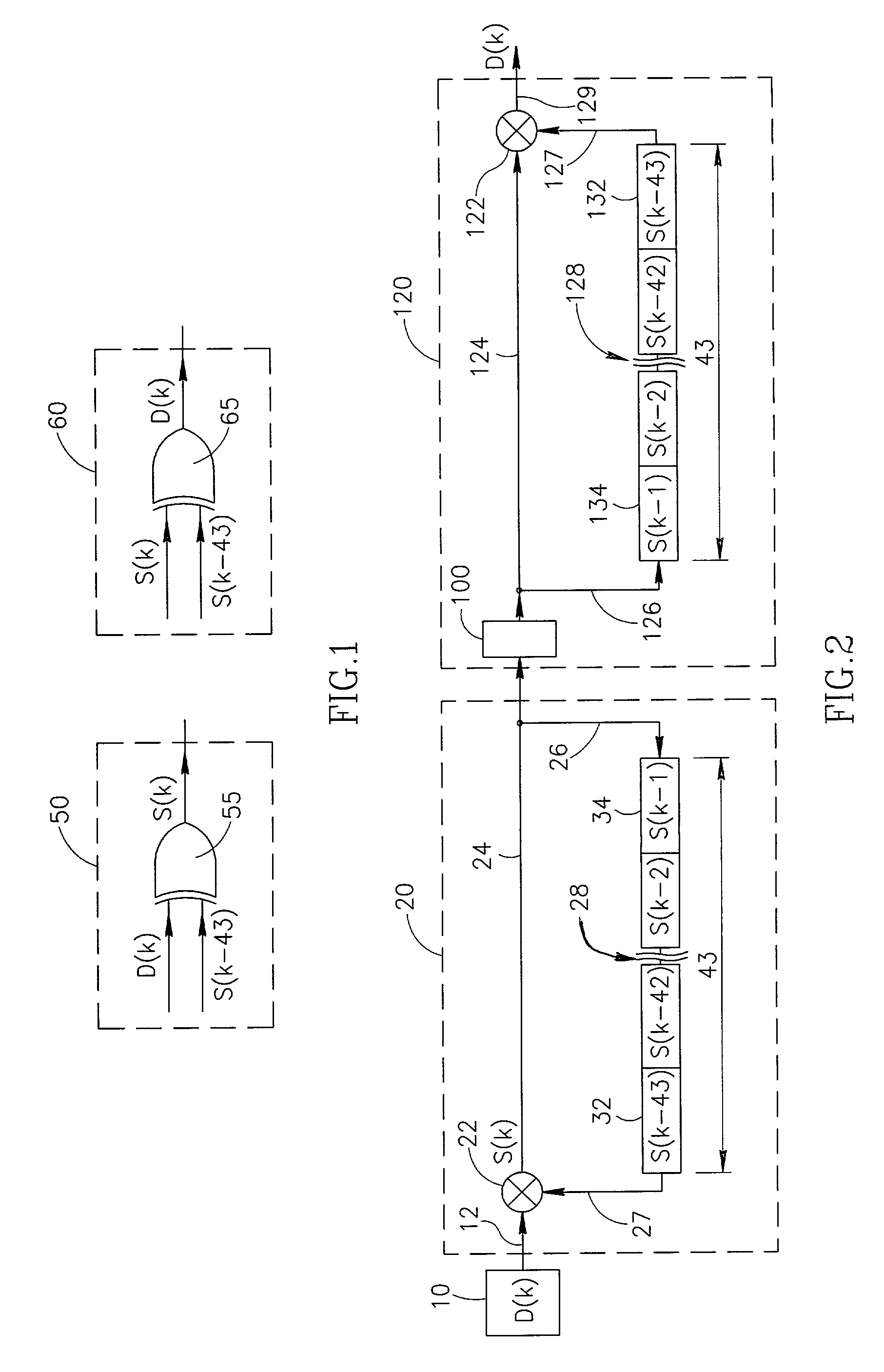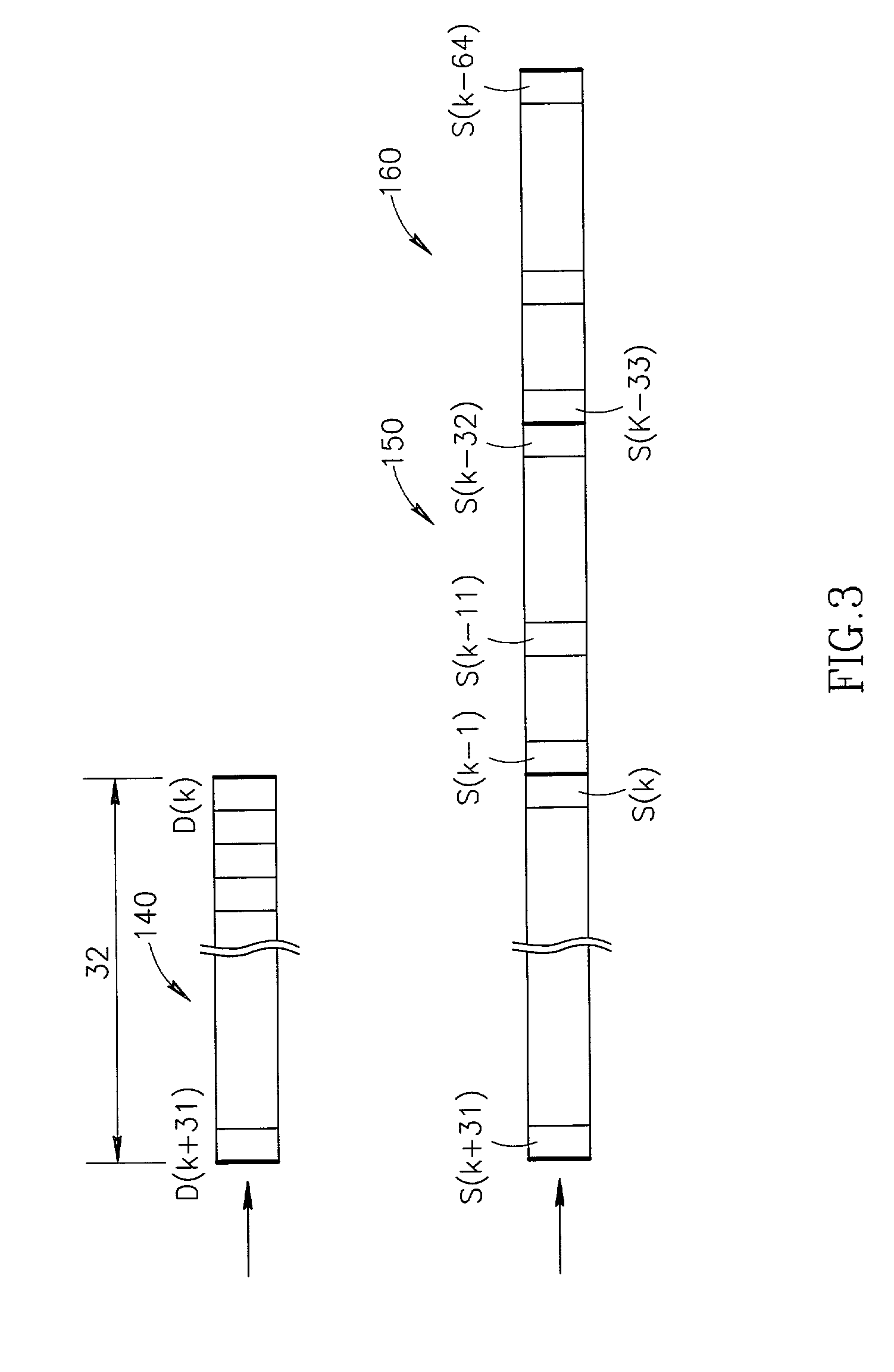System for fast scrambling and descrambling of data
- Summary
- Abstract
- Description
- Claims
- Application Information
AI Technical Summary
Benefits of technology
Problems solved by technology
Method used
Image
Examples
Embodiment Construction
[0025]A better understanding of the present invention might be achieved by first referring to FIG. 1, a depiction of the HDLC / ATM standard requirements, in which 50 is a scrambler operatively connected to a transmitter (not shown), and 55 is a XOR gate for scrambling a sequence of data bits. XOR gate 55 has as one input D(k), the k-th data bit in a sequence, and as the other input scrambling bit S(k−43). XOR gate 55 output is S(k), the k-th scrambled bit. S(k) is then transmitted to a receiver (not shown) to which descrambler 60 is operatively connected. S(k) is then descrambled by XOR gate 65 having as one input S(k), as the second input S(k−43), i.e. the scrambling bit, and as the descrambled output—bit D(k), the data bit.
[0026]Referring now to FIG. 2, there is depicted a schematic SD system representative of those taught in prior art HDLC / ATM standard related publications, in which transmitter 10 transmits data serially along line 12 into scrambler 20 of a communication system. L...
PUM
 Login to View More
Login to View More Abstract
Description
Claims
Application Information
 Login to View More
Login to View More - R&D
- Intellectual Property
- Life Sciences
- Materials
- Tech Scout
- Unparalleled Data Quality
- Higher Quality Content
- 60% Fewer Hallucinations
Browse by: Latest US Patents, China's latest patents, Technical Efficacy Thesaurus, Application Domain, Technology Topic, Popular Technical Reports.
© 2025 PatSnap. All rights reserved.Legal|Privacy policy|Modern Slavery Act Transparency Statement|Sitemap|About US| Contact US: help@patsnap.com



